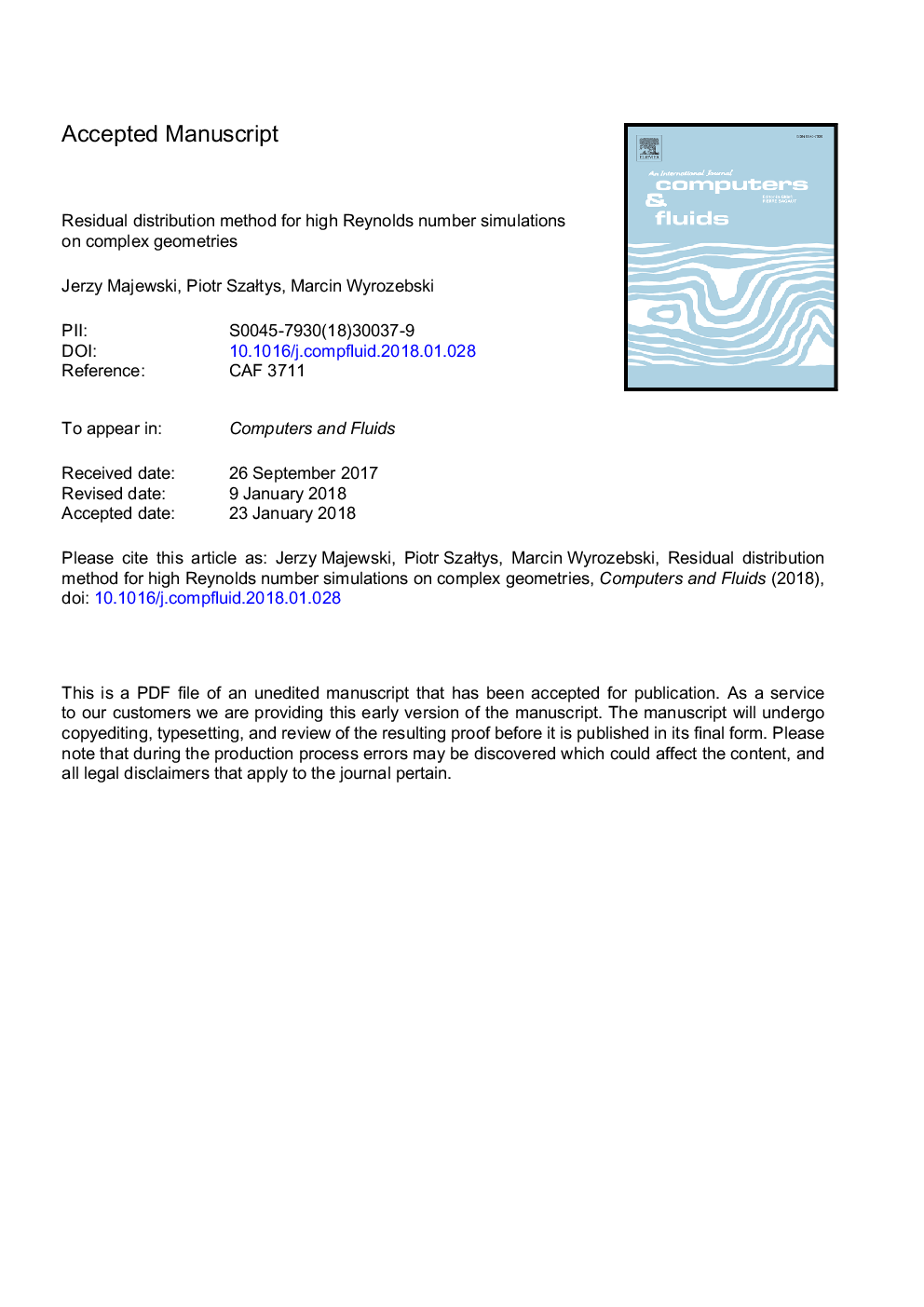| Article ID | Journal | Published Year | Pages | File Type |
|---|---|---|---|---|
| 7156306 | Computers & Fluids | 2018 | 29 Pages |
Abstract
In this paper the application and performance of a Residual Distribution Scheme (RDS) for high Reynolds number, turbulent simulations on complex geometries is presented. The RDS is a numerical method for solving Partial Differential Equations, alternative to the typically used Finite Element and Finite Volume methods. The RDS method has been already successfully applied for both 2D and 3D turbulent aerodynamic cases, however the geometries were of limited level of complexity - at most a 3D wing (e.g.: Onera M6, delta wing). In this paper a flow past a 3D wing-body geometry with extended slat and deflected flap configuration is investigated. The geometry is the one from the High Lift Prediction Workshop 1 (HLPW-1). The RDS results are presented and compared with contributions submitted to the HLPW-1 workshop. The comparison of the results shows that the RDS provides very accurate solution both in terms of pressure coefficient distribution, especially in a region near the wing-tip, as well as integral values (lift, drag coefficients).
Keywords
Related Topics
Physical Sciences and Engineering
Engineering
Computational Mechanics
Authors
Jerzy Majewski, Piotr SzaÅtys, Marcin WyrozÄbski,
